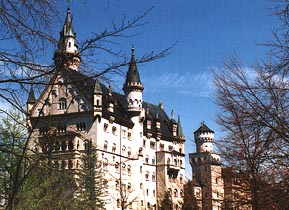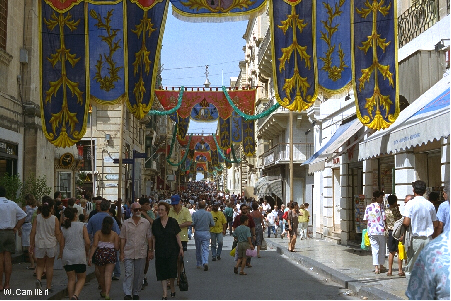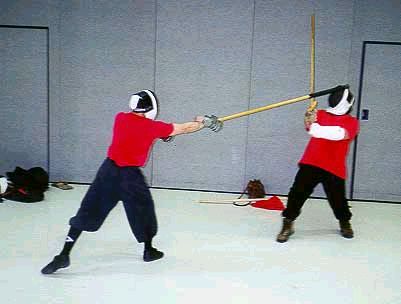

This is the capital city of the main island. When the Islands where discovered by Cook in 1778, this city was built and named Port Adams, after Cooks first steersman. When Maoco gained its independance in 1862 an elite group of former englishmen chose a king (George Cantleton I), who renamed the capital Queensville, after the queen of England.
This elite group also introduced a caste-system wich devided the population into four different groups: Royal class, High class, Middle class and Low class. The first two classes were reserved for former englishmen. Mediterranean people were called the Middle class, and former Indians were called Low class. Naturally: the higher the class, the more rights one had. This system was not changed until after the revolution in 2003.
During the oppression years of general Macguire Kings (1973-2003) Queensville was not considered the capital city. Kings renamed his favorite town New London to Kingstown, built a fort and a large estate there, and called Kingstown the capital city. In 2003 Queensville regained the status of capital city again, and Kingstown was renamed Richmond, after the late king Richard Cantleton (ruled 1963-1973).
Sights
The old city of Queensville is surrounded by a stone wall. It only has two gates: one at the north side, and one at the south side leading only to the docks. All the 'long distant' ships arrive and leave from the Queensville docks. Therefor foreign visitors will always enter Queensville through the south gate, after passing the immigration office.
If you walk through the narrow streets up north, you see offices, old victorian-style three storey houses and lots of bars and terraces. You also find all the best shops and most important offices here. Its important to realise that offices like a postal office, the immigration office, a public lawers office and a good dentist, you will find nowhere else on the island.
Before leaving the city through the north gate you will find yourself at the market-square. Although situated at the north, this square is considered the centre, or the 'heart' of the city. It is always crowded with hawkers, painters, musicians and market-traders. This is the best place to be if you like some street amusement, or want to feel the relaxed city athmosphere.
There are also two large impressive buildings on the square: The Saint Lucas Cathedral, and the Queensville Town Hall. It was in this Town Hall that the treaty of peace was signed after the Revolution in 2003. In the middle of the square you will find a historical sculpture named: 'Handshake of Peace', made by local artist Diego Martidas in 2003. It features the three great 'Revolutionairs': King George IV of Maoco, King Jyacomo El Drango of Kananga, and Prince Mandyano Dosvado El Drango, shaking hands on june 7 2003, after winning the revolution.
Leaving the gate at the north side you will enter Queensville Forest. In this suburb you find another style of houses. The wooden houses are built later and they are larger than most city houses.
A place worth visiting is Queensville Palace. Built for King George I in 1879 it is situated in the Queensville Forest, next to a monas-tery. Surrounded by a canal the drawbridge is the only entrance. You will be amazed by the beauty of this elegant, small, white and gold painted, fairytale-like palace, wich architecture containes arabic and indian influences. With domeshaped tops, and lots of small towers. All the Cantletons have lived in this palace. The palace has also always been used to seat the government with the exception of the opression years. During these years the royal family was held hostage in this palace, while the government was operating from Fort Kingstown.
The rectangular building on the right side of the Palace is Saint Francis Monastery. It was built in 1870 and was also used as church for the royal family, and to house the royal stables. The idea was to rebuild the Palace (because it was originally build too small to house a large household and animals) but they decided against ruining the canal system surrounding the Palace, and choose to build another building next to the Palace insted. Part of it has always been used as a Catholic private school, and the other part of the building was used by the Palace household and the royal live-stock. Only during the oppression years there were also soldiers (and their horses) situated. Today it houses the Queensville Athletic Club, known for its excellent Equestrian and Martial Arts programm.

